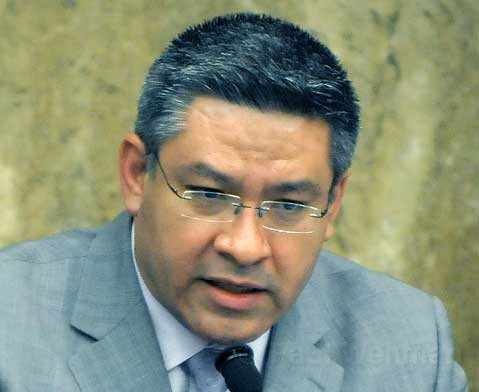The Carbajal Compromise
County Supervisor Searches for Compromise on Botanic Garden’s Vital Mission Plan

What would Salud Carabajal do?
For many months, that’s been the big question for everyone embroiled in the controversy over the Santa Barbara Botanic Garden’s Vital Mission Plan, which proposes to develop parts of the 73-acre Mission Canyon institution in an effort to keep it viable into the 21st century. Because the Garden falls within Supervisor Cabarjal’s 1st District, it was assumed that the four other county supervisors would take his lead, which is why he’s had his ear bent repeatedly by those in favor and those opposed to the plan for fire safety, archaeological concerns, and other reasons. On Tuesday at the Board of Supervisors’ second full-day hearing on the matter, it only took about four more hours of public testimony before everyone got their answer by means of Carbajal’s compromised take. And in unanimous order, the other supervisors quickly agreed.
“I have been breathing, eating, and sleeping this for months, if not years, now,” said Carbajal, who explained that rather than an up-and-down vote, “The real goal here is to reach a balance between the Garden and community concerns.” That balance, according to Carbajal, includes:
* a cap on 200 total people on-site (including non-residential staff) during the May 1 to November 30 fire danger season, with a 250 max during the other months;
* no growth allowed above that, putting an annual max at 110,000 visitors per year;
* limiting events with more than 80 guests to 17 per year, holding the overall special event cap at just under 2,000 per year;
* keeping classes at the annual baseline of 1,778 students;
* restricting amplification to merely spoken word, and no music;
* denying the two proposed buildings on the Hansen property and moving the caretaker’s cottage to the same area as the to-be-rebuilt director’s residence;
* turning all current and future fencing to post-and-wire rather than chain-link;
* allowing pavers to be used only around the new buildings, not the 10 percent limit initially allowed for the entire property;
* modifications to the fire safety plan based on the May 1 to November 30 fire danger season that will also make closure easier during high wind and other potentially dangerous situations;
* no land use permits unless they are shown to be consistent with the updated Mission Canyon community plan;
* mandating that all ground disturbances get an archaeological evaluation and that a Native American monitor be on site during all construction;
* that the Historical Landmarks Advisory Committee oversees all development that affects the landmark-protected zone;
* that the infrastructure improvements precede all other construction and be tested first;
* that the construction phases have a spread-out timeline;
* that informational meetings are held for the public before such phases or to announce any changes;
* and that temporary exhibits be kept to two years of length rather than three.
At the end of the day’s first hearing — which dealt specifically with the three official appeals to the County Planning Commission’s approval of the project — Carbajal was ready to allow the Garden to keep the two 18-inch-tall walls in the historic meadow. But then, around 5 p.m., the supervisors allowed the final hearing of the day to proceed, which concerned the Garden’s appeal of the Historical Landmarks Advisory Commission denial of those walls and other landmark-area changes. The slew of historical advocates changed Carbajal’s mind, and he led a unanimous vote to uphold the HLAC denial. “After this hearing, it’s become absolutely clear to me of the passion and significance, after I factor everything in, of the meadow and I cannot, in good conscience, allow the terraces to be there,” said Carbajal.
By the end of the day, Carbajal’s “compromise” quickly looked like a loss for the Botanic Garden. “The Garden’s Board of Trustees is evaluating the direction of the hearing and is hopeful for a positive resolution that will ensure the Garden’s future viability,” explained Garden spokeswoman Nancy Johnson, relaying a certain sense of administration dismay.
The opponents, meanwhile, were much happier. “All things considered, I think today’s proceedings went well,” said Ray Smith of the Mission Canyon Association, one of the official appellants. “I believe that the supervisors understand the concerns of the community and are working to forge a solution that meets these concerns while accommodating the Gardens’ need for expanded facilities.”
Although he was disappointed that there was not a more drastic reduction of the proposed facilities, attorney Marc Chytilo, who represents the Friends of Mission Canyon, agreed with Smith. “Clearly, this was Salud’s hearing and he wrestled with the issues and led the deliberations,” said Chytilo, who was pleased that the fire safety issues were addressed. “The residents of Mission Canyon are going to be able to sleep a little bit better tonight knowing that the Garden is not going to expand at the level that had originally proposed.”
The supervisors will make their plans official at the June 1 hearing.



